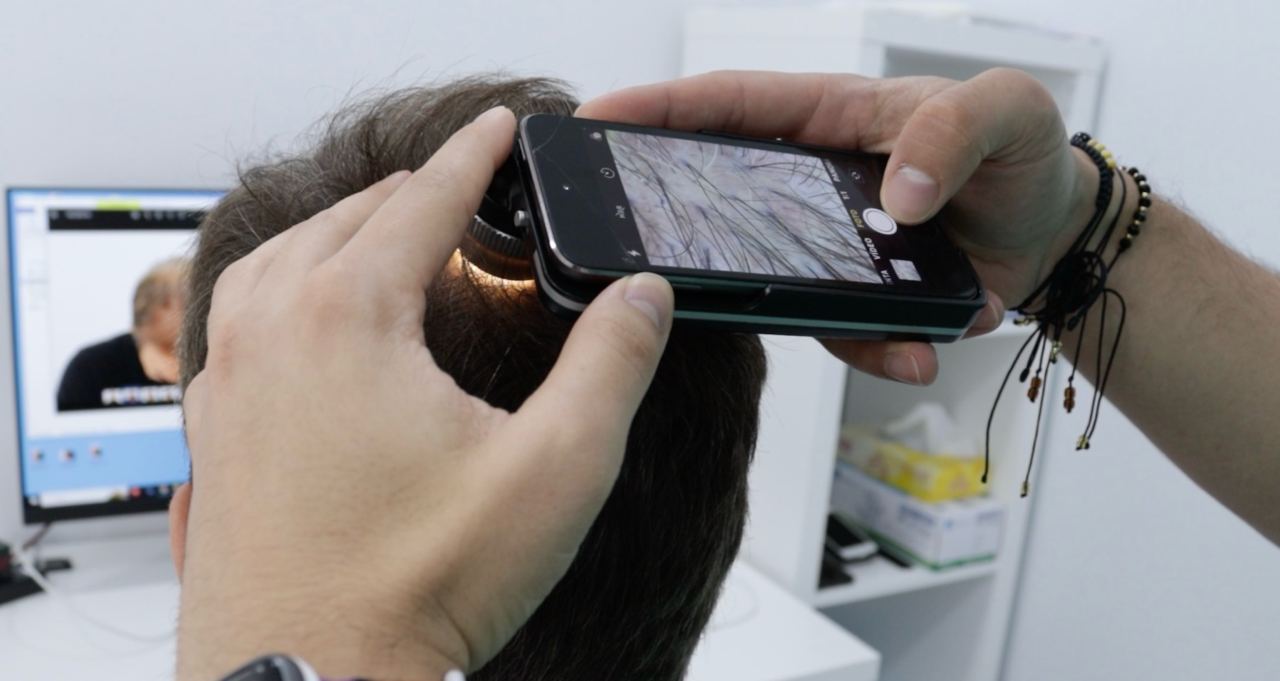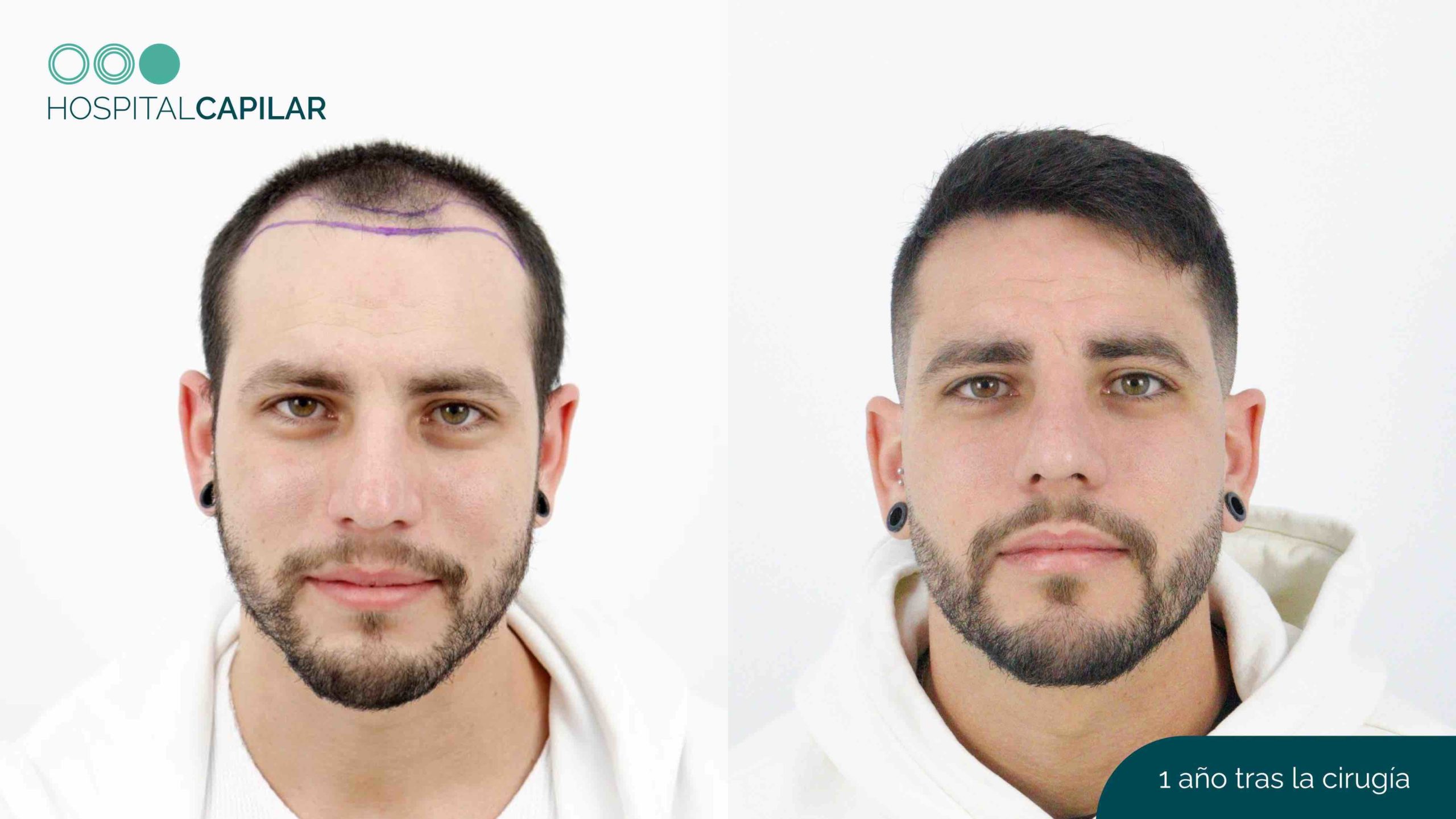Hair loss is a problem that affects a large part of the population, and this is indicated by the rate of alopecia in Spain. It is a multifactorial condition, that is, it can be due to different causes. One of the factors that is usually linked to the origin of alopecia is testosterone, but what is the relationship between testosterone and baldness? How does testosterone influence hair loss?

REVIEWED BY MEDICAL COMMITTEE

Testosterone is the male sex hormone responsible for the development of genitals and male characters, although it is also involved in other physiological processes such as bone development. This hormone is not only found in men, but women also have, although to a lesser extent, levels of testosterone in the body.
Testosterone does not cause baldness as such, but the androgen derived from it. There is an enzyme that is present in both the prostate and hair follicles known as 5 alpha reductase enzyme. This enzyme converts testosterone into dihydrotestosterone, an androgen that attacks the Hair follicles causing its refinement, miniaturization and subsequent irreversible hair loss generating baldness.
Therefore, Testosterone itself does not cause baldness, but an androgen derived from it known as dihydrotestosterone.
There is no relationship between a high level of testosterone in the body and baldness since, as we have mentioned, it is the action of dihydrotestosterone that causes alopecia. Therefore, it is not true that bald people have higher levels of testosterone, only a greater genetic predisposition to the action of dihydrotestosterone on hair follicles.
In men genetically predisposed to it, approximately 5% of testosterone is converted to dihydrotestosterone due to the action of the enzyme 5 alpha reductase. This androgen circulates throughout the organism until reaching the hair follicles of the scalp, which shortens their growth cycle and returns the most rigid scalp membranes. The direct consequence of this is less blood supply to the area, which in turn causes the hair to weaken and become thinner until, finally, the hair follicles atrophy, the hair falls out and stops coming out. This is what is known as androgenetic or androgenic alopecia.
Brianda of, androgenetic alopecia is of multifactorial origin in which certain conditions may occur, such as polycystic ovaries, where there is hyperandrogenism, increasing hormonal levels in the blood.
Androgenetic alopecia is the most common type of alopecia in both men and women. In the case of men, hair loss due to androgenetic alopecia begins to be seen at the receding hairlines and crown of the head, while in women a slight increase is observed. widening of the hairline. It is a disease that has no cure as such, but there are certain treatments to stop its effects and even recover lost hair, as is the case of hair graft.
Yes, it is possible to stabilize androgenetic alopecia by stopping the action of dihydrotestosterone. To do this, it is essential to put yourself in the hands of hair specialist doctors, since the treatments require a medical prescription and periodic check-ups.
There are two drugs widely used to stop hair loss due to androgenetic alopecia: dihydrotestosterone inhibitors, which directly reduce the production of this androgen; and, on the other hand, blockers, which prevent the process of binding the 5 alpha reductase enzyme to testosterone. The specific drugs are Finasteride, for oral consumption, and dutasteride, which infiltrates treatments of hair mesotherapy directly on the scalp. Thanks to them, hair loss can be stopped.
In addition, it is highly beneficial to achieve better results by applying Hair PRP y Minoxidil. Platelet Rich Plasma does not by itself stop the action of dihydrotestosterone, but it promotes hair growth and stimulates follicular activity. On the other hand, Minoxidil is a vasodilator with which we manage to thicken the hair by recovering hair density.

En Hospital Capilar We have a medical team specialized in hair grafts and hair treatments with which to put an end to alopecia and recover your hair. Request your medical diagnosis at no cost and put yourself in the hands of experts.
Sanitary Reg. No. Pontevedra: C-36-003121 Sanitary Reg. No. Madrid: C517593 Sanitary Reg. No. Murcia: 40004094


Copyright © 2021 - Legal Notice and Privacy Policy - Cookies policy